AudioCulture
The noisy library of New Zealand music
Te pātaka korihi o ngā puoro o Aotearoa
Skeptics
The band only existed for around a decade but in that period performed and recorded some of the kookiest, boldest, and finest experimental music ever made. Their work belongs in the lineage of experimental and pioneering sound-art and music that began with the Futurist and Dada movements in Europe early in the 20th Century.
The Skeptics’ story began in the late 1970s in Palmerston North, which at the time was a small conservative city in a rural hinterland with a university and a population of 58,600 people. Robin Gauld had recently acquired a guitar and was inspired by new music coming from overseas, such as Pink Flag by Wire. By his sixth form year in 1979 he had created a group called X-IT by roping in Don White on drums, his close friend David D’Ath on vocals, and Ian Reiddy on bass. None of them had much experience on their instruments – how to tune a guitar and bass together was unknown – so the band began its exercises in dissonance early on.
They began rehearsing in a space at Ross Intermediate School where Gauld’s father was principal, and where he allowed them some space to store their gear. By late 1981 Nick Roughan joined the band replacing Reiddy on bass, as well as bringing the concept of tuning the guitars together, and the band became the Skeptics. They acquired local gigs at venues such as El Clubbo and in the process exciting local punters and freaking out more conservative members of the local scene. They supported touring bands and eventually got out of town to play with bands like the Newmatics, The Red, and the Spaces. They came second in a National Battle of the Bands contest in Auckland, which led to their song ‘Last Orders’ being included on Furtive Records’ The 3 Piece Pack 12” EP compilation. (Furtive was an offshoot of Propeller, owned by Simon Grigg and Paul Rose)
Five tracks recorded at Ross Intermediate were scheduled for release as an EP in spring 1982, but the tapes were stolen from the label’s office and it never emerged. Russell Brown, who saw them at The Rumba Bar in Auckland that year, wrote: “David D'Ath wore a gangster-style hat, undulated and jerked his body and made weird movements with his hands – both he and the music were riveting. The Auckland audience was a bit freaked by it all.” Experiments by D’Ath using his voice as an instrument, created an impressionistic type of feel similar to the recorded audio experiments made by members of the Futurist, Dada, and Surrealism art movements in decades past.
After a protracted stay in Auckland, the Skeptics returned to Palmerston North. In 1983 they played shows at the Eiffel Lounge at the Cafe De Paris Tavern, and supported the Birthday Party at Massey University in May; Nick Cave stood at the front of the audience watching their set. Shortly afterwards the Skeptics performed at the Cricketers Tavern in Wellington, and all of the Birthday Party were present. Robin Gauld recalls, “They were the only audience we had that night in Wellington.” In July 1983 they recorded the eight-track 12” mini-album Chowder Over Wisconsin in one day with Doug Hood and a PA borrowed from the touring Naked Spots Dance and Stones. Released in late 1983, Chowder shows the Skeptics in exhilarating form, with their choppy mixed rhythms and D’Ath’s Burroughsian word-play becoming a unique musical style.
A recording exists of their set; it is is at first jarring and unsettling, like an insane cacophony.
The band continued its creative momentum with more shows and on New Year’s Eve 1984 performed at the Windsor Castle in Parnell with Children’s Hour, Youth For Christ, Infectious Grocer, and Man Jack. A recording exists of their set; it is at first jarring and unsettling, like an insane cacophony. Further listening reveals an extremely focused band creating unexpected structures, angular rhythms, and changing dynamics and time signatures, all startling the audience. There are similarities to Captain Beefheart’s music circa 1969 but without the blues basis. ‘Divine Muscles Flex’ is an excellent example of this, with D’Ath’s chanting “heh hah, he hah” on top of the pub closing-time bell. A review of this show in Rip It Up in January 1984 described the Skeptics as “absorbing … songs like ‘Jelly’ display a streak of profound strangeness a mile wide.”
The songs were purposefully crafted this way; in a 1984 interview the band describes its current music as “a defiance of old styles”: if an audience was alienated by it, that was positive as it provoked thought. Roughan said in 2016, “We’d generally compose stuff, like most people, jamming around. But we’d find pieces that we’d like and try and glue them together. I don’t know if they always worked successfully but we didn’t want to play straight ahead four-on-the-floor rock and roll. That was not an option. And especially at that time too, Robin Gauld was always the enforcer and if anything sounded slightly like anyone else then that was out the door but that did help keep it different”.
A boon occurred for the Skeptics in the summer of late 1983 when the local council offered them the use of an empty warehouse behind Square Edge, and asked them to run it as an underage venue. The Skeptics grabbed the opportunity and Snailclamps was born, with the name coming from a sign found inside for a “Snailclamps C164”. The venue was soon hosting Skeptics gigs and other bands such as the Axemen, Great Unwashed, Flesh D-Vice, Childrens Hour and others.
In late March of 1984 the Skeptics took off on another tour, taking in Auckland, Dunedin, and Christchurch (Rip It Up’s gig guide lists a date in Gore on the first of April, probably as an April Fool’s joke). Around this period Paul Luker’s Industrial Tapes, a cassette only label based in Auckland, released Said See Say. By the middle of 1984 Snailclamps was at full tilt and a psychedelic playground for some of the punters. However amidst such revelry the band was finding it difficult without professional door people: violence occasionally broke out among less loved-up persons. The band’s touring continued but things were beginning to change: there was no money to invest in the venue, and the band became interested in moving to Wellington.
By 1985 all of the Skeptics except Robin Gauld had moved to Wellington. Through mutual friends they hooked up with ex-Gordons John Halvorsen and Brent McLachlan. Nick Roughan recalls, “We had a four-track and we got together a couple of times and played around and had some fun, and we agreed to start a studio together. We found this building in Victoria Street in Wellington and that was our first recording studio, which was also a flat, so we went into that together. Our idea was to build a residential studio.”
In April 1985 the Skeptics toured the South Island with McLachlan doing their sound. Nick Roughan, recalls one particularly memorable night was at the Old Mill in Timaru, which was full of drunk Russian and Australian sailors. “We got up and played our first two songs and someone shouted out at David ‘show us yer cock’ and he shouted back ‘show us yer growler’ and shortly after that the owner of the bar came up to us and said ‘Look, if you stop playing now I’ll pay you. If you keep playing they’ll go and I won’t pay you’. So we stopped playing and went and sat in our dressing room for the whole evening and they played a Bruce Springsteen tape and everybody was happy. And at the end of the night the bar owner said ‘Look I want them all to go now’: so we went out and played our most obnoxious songs to get rid of them all.”
By June/July 1985 the band had recorded and mixed their album Ponds at Wellington’s Frontier Studios in three or four midnight-to-dawn sessions. About 400-500 copies were pressed, and it was released on the Skeptics’ own label, ULP Records. Ponds is hallucinatory listening with a mixture of passing emotional landscapes; the recording of ‘Divine Muscles Flex’ is pure magic. Paul McKessar reviewed Ponds in the September 1985 Rip It Up: “The Skeptics do not make nice records… Initially I thought it all sounded a bit dodgy, but ‘Ponds’ sort of grows inside you, like a disease, ’til you actually like the unlikeable.” The music, while wild and bumpy at times, has a lot of space within it and is devoid of the production clichés of the time such as heavily gated reverb on the drums. Roughan notes this was probably because the studio had such minimal gear.
Ponds is a landmark release of 1985, although at the time The Skeptics weren’t happy with it.
Ponds is a landmark release of 1985, although at the time the Skeptics weren’t happy with it. Roughan: “It didn’t really live up to what we had in our heads; although we felt quite strongly about the composition of the songs we didn’t find that the recording reflected what we wanted to portray in them.” Not that long after the release of Ponds Gauld left the band. He comments, “[there] was never an official last gig. [It] just kind of phased out.” However he pursued a few other music projects including a connection with Skeptics members in playing with Don White and Nick Roughan as the rockabilly hammed up pastiche band The Go Cats and with Roughan as The Gun of Sod. He left New Zealand to travel abroad for a year in 1988 then went to Victoria University in 1989.
The Skeptics were involved in many side projects, often because they didn’t have support bands for upcoming shows. One of the best names of a Skeptics tangent is the absurdist Boiled Owls. Roughan says, “The whole name was ‘It Takes A Hard Man To Eat Boiled Owls’, which was something that David came up with. It was just for fun and was basically David and myself. They were songs that didn’t fit the whole Skeptics thing that he and I performed.”
Sometime in 1986 D’Ath bought a sampler: music technology which had just started to appear in New Zealand shops. While an expensive purchase, it became a fundamental shaping component to the next phase of the band as it moved into a more electronic oriented sound. The Skeptics played one show as a trio without Gauld at the Wellington Fringe Festival, but afterwards decided that their music without a guitar lacked a little humanity. “It was a little too electronic and robot-y,” said Roughan. “At that point in time you looked at the mixing desk and there would have been about three microphones and the rest was all DI [direct input] into the desk so we were basically very much an electronic band at that point. David thought it would be a good idea so we asked John if he wanted to add some of his Halvorsen tones to it. And that worked out really well.“
Around this period Frank Renouf, the merchant banker who owned their building, offered the band a sum of money to leave. The Skeptics readily agreed. New premises were found on Vivian Street, and the building of Writhe Recording commenced; it would feature a new 16-track tape machine. The building of Writhe at Vivian Street took the Skeptics out for almost a year, but its development became a huge benefit to both the Skeptics and the New Zealand musical community. Writhe was in demand as a studio, and from 1987 many now-classic local records were made there.
Video became integrated with Skeptics performances: during a Gluepot concert in October 1987 with the Headless Chickens, the audience was barraged with images and a massive, undulating sound. In the audience was Ilmars Gravis, then a young Auckland artist; he recalled the imagery featuring a lot of seagulls. D’Ath had employed Antony Cornaga to do visuals, including films. Knowing that the Headless Chickens were using video, the Skeptics decided to raise their game. Cornaga had been working with Fetus Productions in Australia, and had a library of material. He was “pretty much given free rein to do what he wanted really,” says Roughan. “It didn’t really have any relevance to the music, it was kind of incidental but it was nice to have something different there, rather than just basic rock and roll lighting. Back in those days there wasn’t really a lot of budget left for doing fancy displays or anything like that. It was very much about the music.”
During that Skeptics sojourn in Auckland in the spring of 1987, D’Ath met Sarah Fort, ex-Fetus Productions. The filmmaker and artist Stuart Page brought D’Ath to his house to shoot closeups for the ‘AFFCO’ video. Fort was his flatmate; since the demise of Fetus Productions, she was working at Real Pictures in His Majesty’s Arcade. Fort said, “We felt [an] immediate connection over that week ... he wanted to go to the USA but no one else in the band looked like they could go.” Fort said she would come with him if Real Pictures closed, which it did – and within two months His Majesty’s was demolished. The Skeptics, she said, “had a great heavy hypnotising sound with lots of samples at a time when that wasn’t the norm. But what blew me away was the content of the lyrics and the vocal style.” Fort and D’Ath went to the US and Mexico for a period and married in September 1988.
The electronic flavour of the band’s music kept developing. Don White bought an Akai rack sampler unit but didn’t like the options of any makers drum pads: “they all seemed too ‘hard’ to hit and cost far too much”. So he researched how they worked, experimented with materials, and made his own. White grew up in a family of nine children and they often had to make their own toys so he was “a bit handy”. As his designs progressed, he sold each new set he made to other drummers. “I first went totally electronic in the Sensible Shoes era, but then brought real drums back into my kit, as I missed the warm sounds.”
In late 1987 the Skeptics’ III album came out. The first release by the Skeptics Mark II, it was a critical success and a brilliant exposition of their new phase. The cover image, a blurred and somewhat austere portrait painting by Halvorsen, perfectly summed up the mood and feel of the songs within it. ‘Agitator’ in particular – with its pretty piano arpeggio section segueing into a monstrous nightmare type space, then into an evocative chant by D’Ath.
‘AFFCO’ is another standout track.
‘AFFCO’ is another standout track. Much has been written about its notorious video directed by Stuart Page, and its banning from broadcast by TVNZ, but it is a 16mm artistic tour de force that enabled urbanites to look at the usually hidden reality of the abattoir.
The Skeptics’ work at this stage was moving into ever-more technified and curious areas by the utilisation of the samples that D’Ath found by spending hours with a hired video machine plugged into his sampler. “Every time he heard a good sound he’d snap it,” says Roughan. “So that’s how a lot of those sounds come from. And then after that, they were manipulated, and we’d build around it. Of course the kookier and weirder the time signature, that’s where Don came into his own because he could play drums to stuff that any normal drummer would totally struggle with. Like ‘I can’t play to this, it’s weird, it’s out of time’.” Around this period Brent McLachlan began joining in as a second drummer. Having two drummers allowed the band to do more, says Roughan: “Brent was an excellent technician and timekeeper so we decided to try and combine the two to try out some different things.”
Activity around the Skeptics was fluid: Halvorsen hooked up again with Alister Parker, and the first Bailter Space album Tanker was recorded at Writhe in 1988. The following year, McLachlan also joined Bailter Space, going on a short New Zealand tour with them in July, with Roughan doing sound. Writhe was a busy place and the Skeptics continued their own work with an intense focus. Unhindered by a lack of access to high-end recording technology, the material that would become Amalgam began to take shape. In an interview on TVNZ around this time D’Ath said that the group’s strength lay in its dedication, adding: “We’re a very very close group.” Don White continued, “The creativity seems to point in the same direction in so far as the music and the sounds we want to put across”. In December 1989 the Skeptics played a series of shows around New Zealand: a bFM live-to-air recording of a Gluepot show exhibits a band at the peak of its powers.
On 1 January 1990, after finding himself short of breath and suffering colds, D’Ath informed his friends that he had been diagnosed with leukemia. It was his 26th birthday. “Yeah, it was definitely a shock,” says Roughan. “I don’t think anybody thought it was going to be terminal but we knew it wasn’t good. For David’s part he said very little about it. He just got on with it. We got on with rehearsing and working when we could, when he felt up to it, and when he couldn’t we didn’t. It was not something that we discussed a lot, it was something we were aware of but I don’t think any of us realised how sick he was.”
work on the material that would become Amalgam continued.
Work on the material that would become Amalgam continued, with White and McLachlan drumming. In July 1990, on the eve of the Skeptics' last gig in Auckland, D’Ath told Simon Coffey of bFM that he felt the album was harder rhythmically than III. I asked Roughan if knowing about D’Aths illness altered the dynamics of the Skeptics and their work. “I don’t think a lot changed,” he said. “We were always together anyway so perhaps there was an unconscious feeling that we needed to do things a bit more urgently. It was difficult. I don’t think anyone wanted to talk about it too much and that included David.” Halvorsen recalls, “Before the time David died we were all starting to fall to pieces. That was a really hard time. I’d never had someone die who I was so close to, and so involved with. It was a very difficult time we were going through. Funnily enough it was David who had the strength to hold us all together. He seemed almost unaffected by it, in terms of his … courage. He was just amazing and you know he was helping us through it in a sense.”
On 13 July 1990 the Skeptics were set to play the album launch for Amalgam, however the record had been delayed and it was not available. The band was looking forward to doing the show and during the bFM interview in the afternoon before the show, White and D’Ath discussed the delays, how another album was finished, playlists on American radio, and getting overseas. D’Ath was upbeat, in full creative mode looking to the future, and defiant of his illness, “I’ve got to get over a few things myself personally. This year’s been a bugger for me, but um next year, next year, if I can get past it. I’ve got a bone marrow transplant, which is a bloody hassle, cos I’ve got that leukemia shit. So if I can get past that, then we’re onto other things eh. Definitely, definitely.” The band’s performance that night was stunning. Halvorsen agrees: “It was a good one, I remember that. David didn’t lack in anyway, that’s for sure, even though he was very sick at that time. He gave it his all. We got him out of hospital and he went back to hospital.”
On 4 September 1990, after a brave struggle with his illness, D’Ath died in Wellington Hospital, leaving behind his wife Sarah, infant daughter Soweeta, and his friends. A wake was held at his home in Highbury and the Skeptics as an entity ceased to exist. Later in 1990 If I Will I Can and the Sensible Shoes 10” were released, the former including the beautiful ‘Mamouth’ and the latter featuring such gems as ‘You Look Great’ – a song D’Ath wrote about animal skins – and the dreamy title track ‘Sensible Shoes’. A band called Hub with Skeptics members did some recording and playing until 1992, and the Gun of Sod played as late as 1993. A boxset of Skeptics material was released by Flying Nun in 1992, and a definitive anthology of their work was allegedly scheduled for 2014 but to date hasn’t appeared.
The Skeptics are an intrinsically important part of New Zealand’s musical heritage. They created visionary work that astounded audiences; they expanded the boundaries of contemporary music. There was always a significant buzz before they played, and they showed the possibilities of digital technology and bold experimentation. Their music sounds as fresh and exciting now as it did when the band existed, and they have influenced numerous other artists with their music and visual presentations. Producer and musician Matthew Heine of SPUD and Solid Gold Hell, for example, noted in 2016 that he was “besotted” with what the Skeptics did, expecially enjoying their rhythmic experiments.
When the band was active, the Skeptics made music that was generally outside the comprehension of mainstream New Zealand. They posed crucial questions: what music actually is, and what its function/s might be. Sarah Fort D’Ath comments, “For David, like me, music would have been the most healing balm for pain in the brain at key points in growing up, and other times it’s just exciting – especially when you start to make your own. So you can hear all the things you wanna hear but aren’t in any other music around you. [David] had a Taoist book, he knew Tai Chi, Qi Gong and had the balance to take on shamanistic transformative processes.” His daughter Soweeta Fort D’Ath adds that when she listens to her father’s work now, “I often cry and laugh in the same song: that dark humour is healing. In the end he knew he was dying, and music was possibly the healing medium for that process: not just for him but others.”
In 2016 Nick Roughan and Brent McLachlan are recording engineers, running their own studios: McLachlan in New York and Roughan in New Zealand. Don White is based in Melbourne, and John Halvorsen is based in Wellington and still active musically.
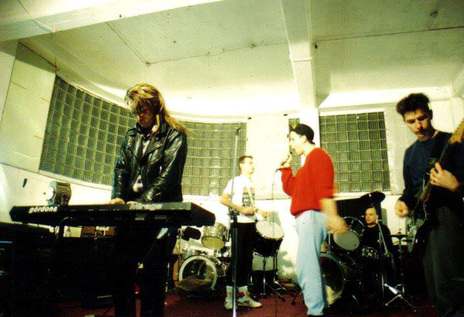
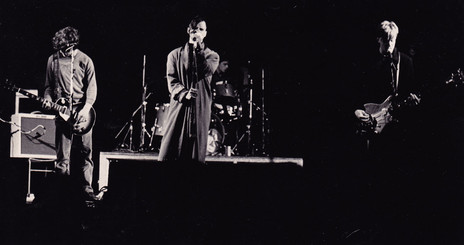
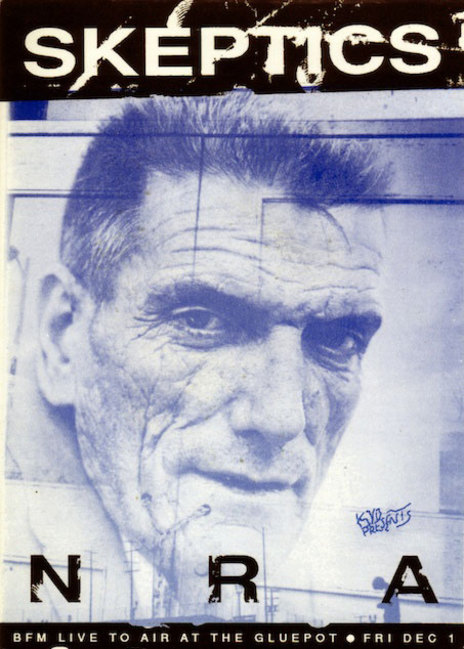
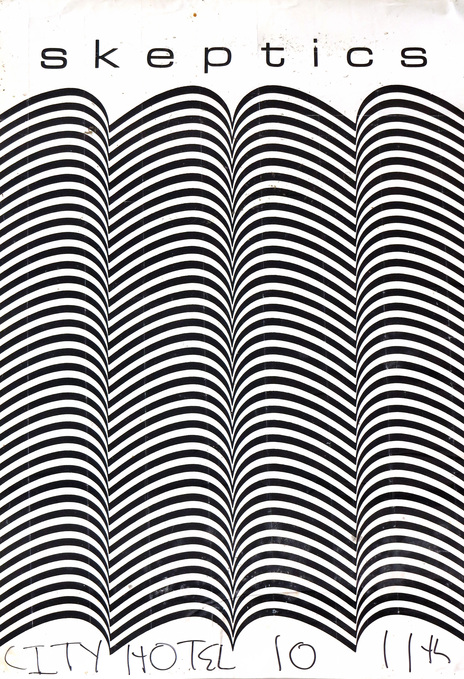
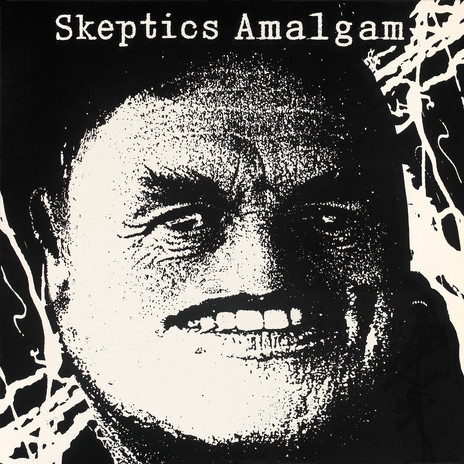
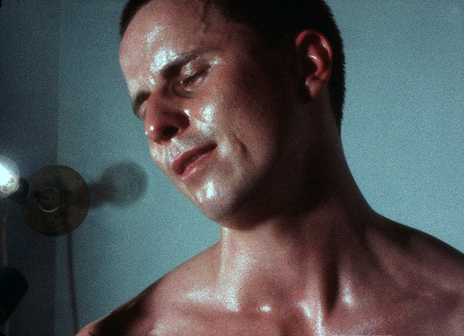
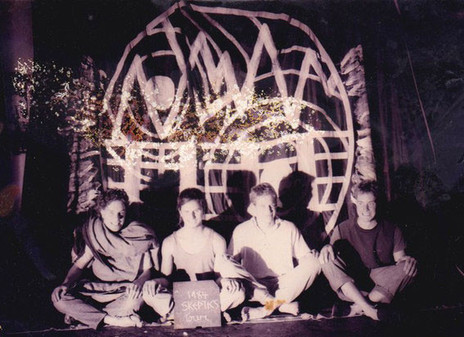
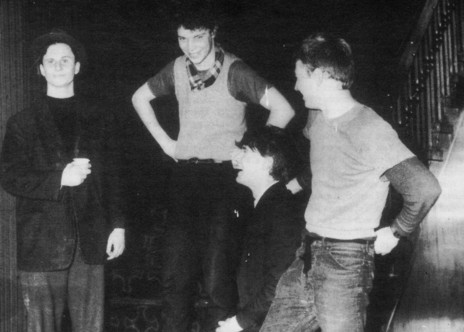
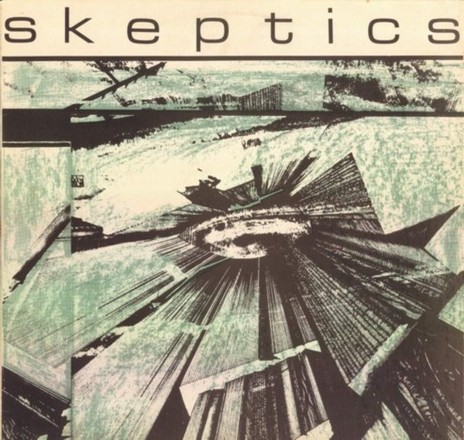
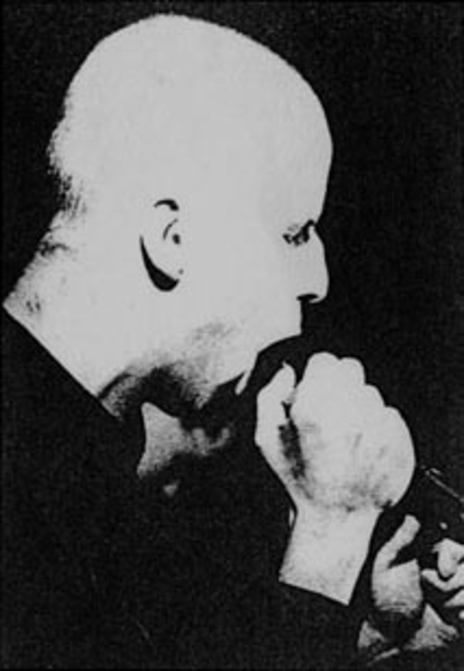
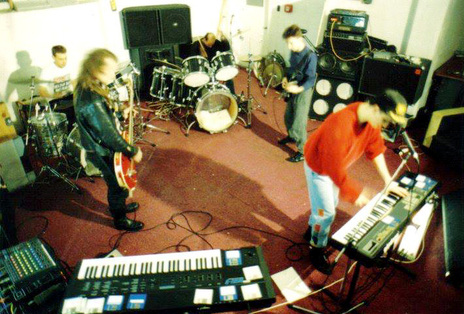
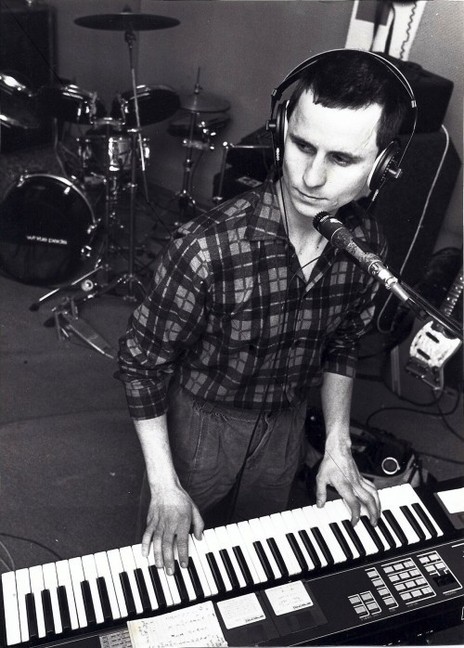
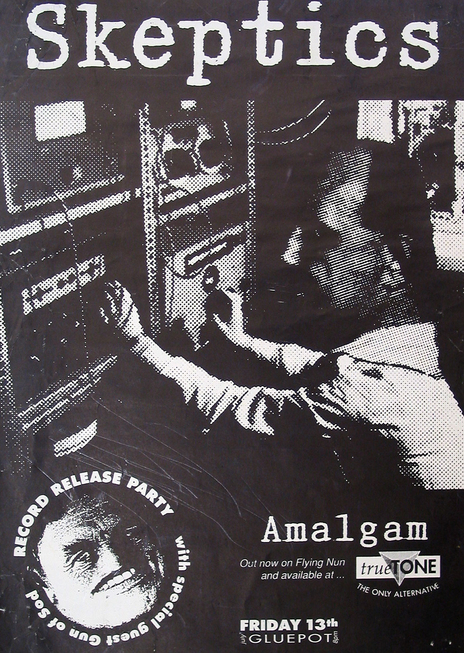
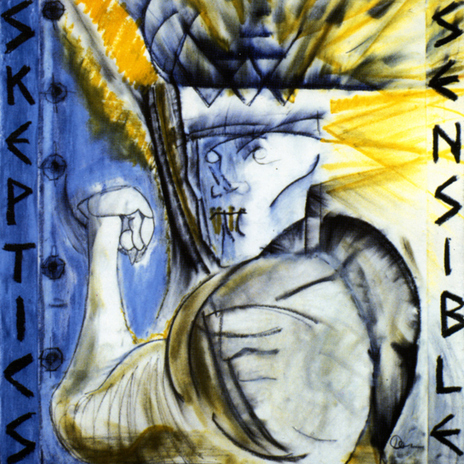
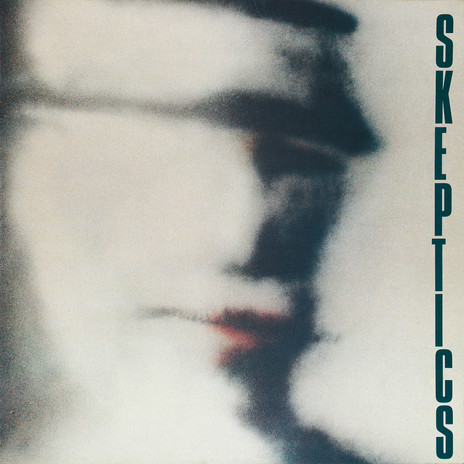
Sheen of Gold - full length documentary, 2013
The story of 'Skeptics III' - Roger Shepherd, 2022
An oral history of the Skeptics
The truth about the A.F.F.C.O. video from Stuart Page
David D'Ath - vocals, sampler
Nick Roughan - bass, sampler, vocals
Rob Gauld - guitar
John Halvorsen - guitar
Don White - drums
Brent McLachlan - drums
Visit our sister site
NZ On ScreenMade with funding from
NZ On Air
